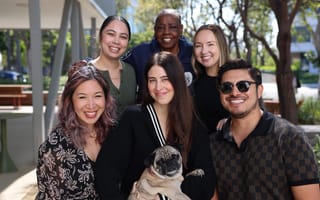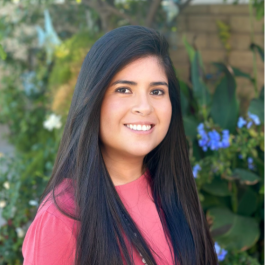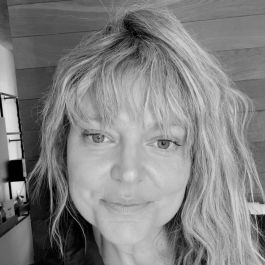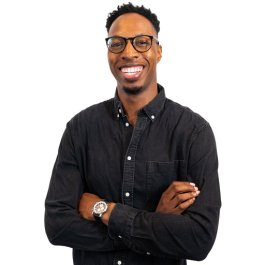When Monica Wamsley came to the United States to earn her undergraduate degree, the last thing she felt was a sense of belonging.
Born and raised in El Salvador, it took her several years to finally feel comfortable sharing her life experiences and opinions with her peers, she recalled. Now, as VP of tax at GoodRx, Wamsley strives to make this transition easier for others through her involvement with the company’s community resource groups.
“It’s very important for me to help build that safe place through the CRGs,” she said.
Wamsley believes that trust is essential for CRGs members to feel safe being their authentic selves by “shedding their protective layers.” And what better way to foster this than by granting individuals opportunities to connect and grow in the process?
For Head of Product Design and Technology Operations Sarah Shipley, leading GoodRx’s Women’s CRG has been both a newfound and enriching experience, granting her the opportunity to take her career to new heights.
“Prior to working with the Women’s CRG at GoodRx, I hadn’t participated as a member of any CRG, and it has been a wonderful challenge as I work hard to develop my community-building muscles,” she said. “There have been successes and failures navigating this dynamic group of women, and I love that I have been given a chance to learn new skills while feeling so much support along the way.”
When team members build new friendships and skills through the company’s CRGs, they uphold the very essence of GoodRx, according to DEI Program Manager Lakuan Smith. That’s why CRG leaders are compensated for their involvement, considering the effort they put into building community is just as important to the work they do in their day-to-day roles.
All in all, GoodRx’s CRGs are a catalyst for authentic connection and personal growth; creating an environment in which, as Smith described, “The biggest challenge on the horizon is deciding which new CRG to launch next.”
Calling In, Not Out
GoodRx’s CRGs — which are dedicated to empowering Black, Latinè, Asian American Pacific Islander, LGBTQ+ and women identifying and non-binary employees — are intended to create safe spaces for underrepresented team members and their allies; a task Smith considers easier said than done, yet is critical to the company’s culture.
“These spaces are near and dear to us because they can increase feelings of psychological safety and empower employees to bring their authentic selves to work,” he said. And in doing so, the CRGs help create a “call-in culture,” meaning that employees can approach tough issues such as unconscious bias with each other in a non-judgmental space rather than publicly criticize each other for their bad behaviors.
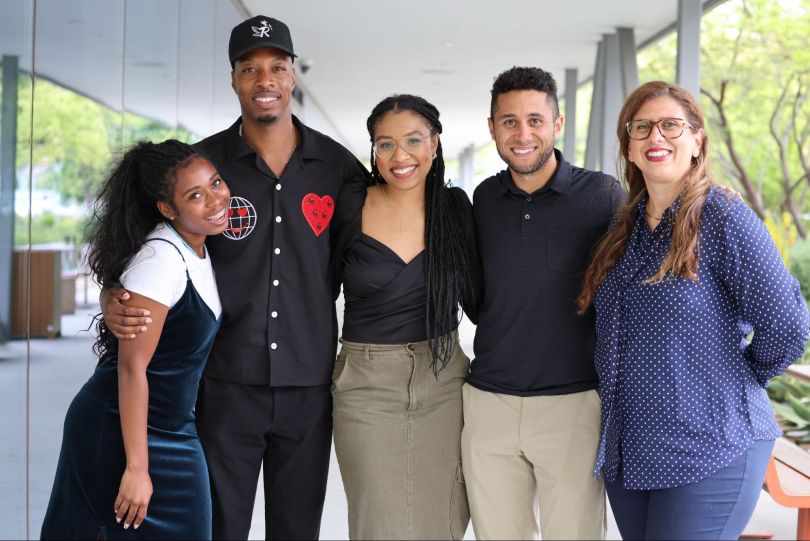
Empowerment Meets Inspiration
Vulnerable, honest and inspiring.
This is what Shipley thought of her peers who participated in chats during GoodRx’s AAPI Heritage Month celebration. Hearing her teammates talk about their childhoods, love for certain foods and memories from moving to the United States brought a level of personal understanding that’s often missing in the workplace.
“I was honored that they felt safe and supported enough to share these experiences,” Shipley said. “I hope that we can all feel that way in our workplaces.”
She gets to see this level of support and safety play out often in the Women’s CRG, where women help each other grow through a peership program that was created to support women managers across the company. Shipley noted that there’s also an executive mentorship program designed to empower women who are further along in their career journeys, and the CRG is planning to partner with the learning and development team to extend these mentoring efforts to others outside the group.
“I’ve personally been blown away by the growth that peership can bring,” she said. “It creates a safe space for women to support each other as they grow in their careers, and it develops a close community that can offer advice, problem-solving support and, most importantly, a place to be heard.”
“I’ve personally been blown away by the growth that peership can bring.”
Acknowledging employees’ unique voices is central to GoodRx’s CRG initiatives. Smith saw this firsthand during Black History Month, during which the company’s BlackRx CRG held events and learning sessions linked to five key areas: education, volunteerism, development, health and celebration.
While he was struck by many aspects of the CRG’s initiatives, he was particularly inspired by a virtual panel discussion focused on healthcare as seen through the lens of the Black community, where the panelists spoke about the importance of understanding one’s family medical history, birth mortality rates for women of color and closing the gaps in health inequalities.
“This particular session had a lasting impression on me because it was one of our most attended initiatives and it showed me how important allyship, health equity and DEI is to our employees,” Smith recalled.
While GoodRx’s CRGs strive to bolster a sense of community internally, these groups also do their part to champion communities outside of the organization. Wamsley, who leads the Latiné CRG, has had the chance to make a difference through that particular group as well as through the Women’s CRG, which supported a nonprofit called the Beauty Bus during Women’s History Month to help deliver beauty and grooming services to patients and their caregivers.
These efforts to uplift and inspire team members reflect the company’s grassroots approach to building an inclusive culture. Rather than force its people to instill equitable practices and policies in a certain fashion, Smith explained, the company gives them the freedom to foster diverse communities when — and how — they want to.
“Not only are we realistic about our timeline to see true impact, we also don’t believe change should only be driven by employees with DEI in their title,” he said. “It’s truly a group effort here at GoodRx.”

‘One and the Same’
Smith has seen many companies tout the phrase: “DEI is a part of our DNA.”
Yet when these same companies are forced to undergo restructurings or layoffs, he shared, DEI programs are often the first business function to be eliminated.
“I can honestly say that’s not the case here at GoodRx,” Smith said.
DEI and GoodRx’s mission are “one and the same” in his mind, grounded in an overarching commitment to equity. While the company’s core business is focused on offering health equity and support for people and their pets, its DEI efforts are centered around providing fair treatment for everyone who walks through its doors, downloads its app or uses its products.
Wamsley agreed, reinforcing the importance of this relationship between DEI and the company’s mission. In her mind, the good that goes on inside the company manifests externally.
“By embracing and fostering a diverse workforce, GoodRx can better address and determine the needs of all consumers across diverse communities,” she said.
“By embracing and fostering a diverse workforce, GoodRx can better address and determine the needs of all consumers across diverse communities.”
Yet GoodRx’s CRGs are more than just a mission-driven cultural initiative. Shipley believes these groups address a basic human need for connection, and she has faith in the people who have made it all possible.
“I feel that GoodRx has a clear mission and a dedicated, experienced and focused team that has worked hard to get this CRG effort off the ground,” she said. “We’re learning as we go, and I cannot wait to see what the CRG program looks like next year and five years from now.”
While perfecting these CRGs will take time, Wamsley added, the reward will vastly outweigh the work that went into building each one. Because when diversity comes out on top, everyone wins.
“When individuals with different experiences and beliefs feel comfortable enough to express their full selves in a work environment, innovation and greatness can happen,” Wamsley said.

